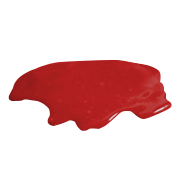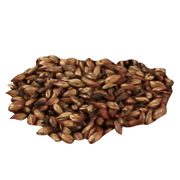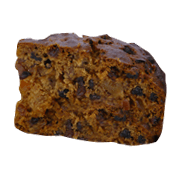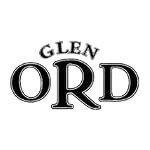Glen OrdSingle Malt Scotch Whisky
The distillery's whisky is used for various blends, including Dewar's and Johnnie Walker; over the years the single malt has been sold as Glen Oran, Glenordie, Ordie and Ord – almost always as a 12-year-old, although a 5yo was also available in the 1980s.
Glen Ord is one of the best exponents of the smoother end of the Highland style, but for some reason Diageo (and predecessors Guinness and Scottish Malt Distillers) seem always to have struggled to fit it into the portfolio. Bafflingly over-looked when the original selection for the Classic Malts was being made (especially considering that the company then chose to include Dalwhinnie as a Highlander, when many writers consider it to being Speyside), European malt fans were horrified when it was announced recently that the Glen Ord 12yo was being discontinued, with the company choosing to concentrate on a reformulated, repackaged version under the Singleton rubric -available only for the Asian market.
As well as the now-discontinued 12-year-old, several older official bottlings have been released in the last decade or so. These include a handful of aged cask-strength bottlings for the Rare Malts series, followed by an acclaimed trio of long-aged, cask-strength expressions for Diageo's annual 'Special Releases'.There have been several highly collectable limited editions and independent bottlings, the most accomplished of which is the legendary 1962 Ord bottled by Samaroli for their 'Bouquet' series.
From the website
Distillery Timeline
The MacKenzies of Ord feature largely in the development of the distillery. The family was granted lands in the west of Scotland by King Alexander III as early as 1263. Thomas MacKenzie of Ord inherited the estate in 1820 and set about rejuvenating the area. He leased land for the distillery to be built, as he envisaged an industry where local men could have all-year round employment. It also gave him a ready market for his barley.
There was competition from 9 small licensed distilleries in the area, most being run as co-operatives of 10-12 tenant farmers. The entire barley crop was used for distilling - the quickest means of turning it into cash to pay the rent.
There are records of an ale house and meal mill on the Glen Ord site in 1549, the meal mill finally closing in 1958. There was also an extensive piggery, taking advantage of by-products from distilling.
- 1838
- The distillery was water-powered by 2 large water wheels driven by water from Loch nam Bonnach and Loch nan Eun. Water for mashing was then taken from the Cuckoo Well and added to the whisky’s distinctive character.
- The distillery employed 18 people.
- The first licence holders were Robert Johnstone and Donald McLennan, trading as Ord Distillery Company. They both subsequently went bankrupt.
- 1870
- McLennan died and his widow married a bank clerk from Beauly, Alexander MacKenzie, who was put in charge of the business. Around this time, Glen Ord was sold in Singapore, S. Africa and other British Colonies.
- 1880
- Some Glen Ord was being sold as Glen Oran.
- 1896
- The distillery was sold at a price of £15,800 to James Watson & Son, whisky blenders of Dundee. This was their 4th acquisition of a distillery as they were committed to obtaining high quality whisky - sales were principally of blended whiskies, particularly 'Watson's No. 10'.
- 1917-1919
- Glen Ord was closed by government order during the First World War, in the interest of conserving barley for foodstuffs.
- 1923
- Watson’s went into voluntary liquidation. The distillery was sold to Thomas Dewars & Sons of Perth, who amalgamated with the Distillers Company Ltd.
- 1930
- Ord was transferred to the ownership of Scottish Malt Distillers, a subsidiary company of DCL.
- 1939-1945
- Closed again for greater part of Second world war.
- 1949
- Electricity came to Glen Ord, until then the distillery was lit by paraffin lamp.
- 1958
- Meal mill closed and the single malt was sold as Or.
- 1961
- Closure of floor maltings; new Saladin boxes built.
- 1966
- The 2 coal-fired stills increased to 6, all of which were fitted with steam-heated coils.
- 1968
- A large mechanical floor maltings was built beside the distillery to meet the needs of 7 SMD distilleries, however Glen Ord continued to use their own Saladin boxes until 1983.
- 1985
- Guinness take-over. Malt and grain distilling becoming United Distillers Ltd.
- 1997
- Guinness and Grand Metropolitan merge to form DIAGEO, with head offices in London.
Character and Style of Glen Ord
-
 Wax
Wax
-
 Apple
Apple
-
 Malt
Malt
-
 Fruit Cake
Fruit Cake
Diageo launched a new 12-year-old single malt Scotch whisky, The Singleton Of Glen Ord, in selected Asian markets back in 2006. Until now it has only been sold in Asia but now it is also available for visitors to Glen Ord Distillery itself. It will not be available elsewhere in the UK. The Singleton of Glen Ord is a rich, smooth-tasting, well-balanced whisky with distinctive packaging.
Glen Ord distillery was founded in 1838, making it one of the oldest in Scotland. Situated on the edge of the Black Isle west of Inverness, Glen Ord continues to malt its own barley and to use the long fermentation and slow distillation methods followed there for generations. For the new Singleton of Glen Ord,a higher proportion of the liquid has been matured in European oak, delivering a rich, smooth-tasting, well-rounded style.
Filter
Price Range
Bottling Status
Age
Vintage
Cask Type
Bottler
Series
Strength
Size
Limited Edition
Flavour Profile
Colouring

Glen Ord 200813 Year Old Signatory
$47.73
($68.18 per litre)

Glen Ord 20129 Year Old Port Finish Carn Mor Strictly Limited
$67.90
($97 per litre)

Singleton of Glen Ord 15 Year OldSpecial Releases 2022
$129.43
($184.90 per litre)

Glen Ord 12 Year OldBot.1990s
$161.79
($231.13 per litre)

The Singleton of Glen Ord 40 Year Old
$3,451.55
($4,930.78 per litre)

Glen Ord 12 Year OldBot.1990s
$161.79
($231.13 per litre)

The Singleton of Glen Ord 38 Year Old
$2,426.87
($3,466.96 per litre)

Glen Ord 197323 Year Old Rare Malts
$1,078.61
($1,438.15 per litre)

Glenordie 12 Year OldBot.1980s Dewars
$214.64
($286.19 per litre)

Glen Ord 16 Year OldManager's Dram
$404.48
($577.83 per litre)

Glen Ord 30 Year OldBot. 2005
$1,186.47
($1,581.96 per litre)

Glen Ord 12 Year OldBot.1990s
$161.79
($231.13 per litre)

Glen Ord 12 Year OldBot.1990s
$161.79
($231.13 per litre)

Glen Ord 12 Year OldBot.1990s Litre
$242.69

The Singleton of Glen Ord 39 Year Old
$2,475.41
($3,536.30 per litre)

Glen Ord 12 Year OldBot.1990s Litre
$242.69



 Glen Ord
Glen Ord